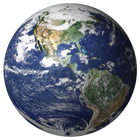Spring has finally sprung in these parts: blossoms bedizening the trees, smiles bedizening people’s winter-worn faces; birds migrating north, gloves and scarves migrating toward long-term storage. For my family, spring is also our preferred time for “treasure hunting” in celebration of Earth Day. It’s an easy (and free) way to get the kids engaged in sprucing up the neighborhood, to create some teachable moments about earth stewardship, and to maybe burn off some of the energy they’ve accumulated over months of being trapped indoors. Here are the how and why.
This post is part of a series on Earth Day 2014.
Gold in them thar woods
For my kids and me, treasure hunting consists of going to a local park, a patch of woods, or just a neglected nearby area and scouring the land — for recyclables, trash, and other sundry items that aren’t where they belong.
For pitching it to the kids, the focus can be on the first category, recyclables. Getting rid of litter can beautify the neighborhood and increase civic pride (just ask Woodsy Owl). But in these parts, at least, returnable bottles and cans are worth money; so altruism and love of Mother Earth don’t need to be the only drivers.
Carbon savings in them thar recyclables

Earth Day treasure hunters with loot. One man’s trash is another man’s, well, trash. And recycling. (Credit: J. Rogers)
If we’ve done a good enough job teaching the kids about climate change, though, maybe carbon alone will get them going, once we empower them with the facts. Because it turns out that recycling and carbon reduction go hand in hand.
In our low-carbon living guide Cooler Smarter, my co-authors and I explain the major contributors to our personal carbon footprints: what and how you drive, how you use energy at home, and what you eat. Our catch-all for carbon-affecting consumer decisions that aren’t related to those other categories is one we very scientifically call “Stuff We Buy.”
The Stuff category is not insignificant — it adds up to about a quarter of the average American’s carbon emissions. But it’s a diffuse category, covering areas ranging from clothing and sewage services to healthcare and financial advice. So it’s harder to take an appreciable bite out of that piece.
Still, there are opportunities there, and recycling is one of them. That’s thanks to the big carbon savings from:

Why recycling matters (Source: EPA, in Cooler Smarter)
- avoiding having to depend so much on raw materials to make things
- keeping stuff out of landfills, where some materials break down in ways that generate methane, a much more powerful heat-trapping gas than carbon
- in the case of paper, cutting down on the need to cut down trees for pulp, which can mean more trees continuing to suck carbon out of the air
So treasure hunting with your family can be carbon-meaningful in multiple ways.
Hunting time: Open season on carbon
Over the last few days we’ve highlighted a few of the fun ways you and your family can celebrate Earth Day, including hunting for air leaks for this summer (and next winter, and far beyond), hunting energy vampires for the whole year round, and cutting your carbon emissions all the while. Treasure hunting is another example.
All of these are free or almost free, and can also save (or earn) you money. That’s the beauty of being cooler and smarter. Cut your carbon, save money, and maybe be healthier and more comfortable, too.
This kind of fun doesn’t have to be a once-a-year kind of thing. But Earth Day is a fine time to reflect on opportunities to spend some quality time with the family, walk a little more lightly on the earth, and draw on the next generation for inspiration — and a helping hand.
Happy Earth Day to you and yours.
What you’ll need for treasure hunting: Bags for trash and recycling, solid gloves, sun protection, rakes or other tools to retrieve items from bushes, thorn-resistant clothing for retrievals that have to be done directly, and plenty of common sense (shared with the children — or borrowed from them) to make sure nothing bad happens.

